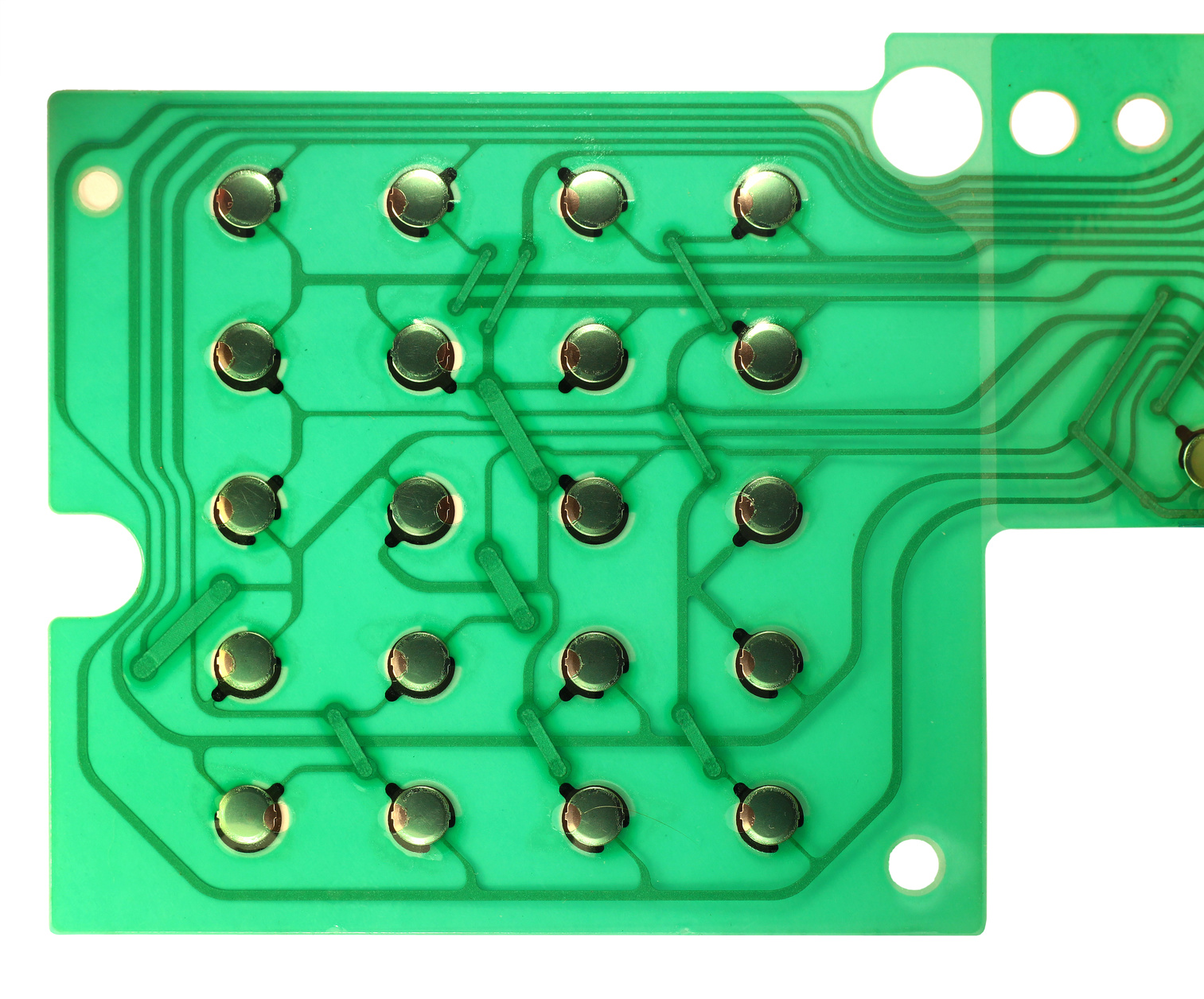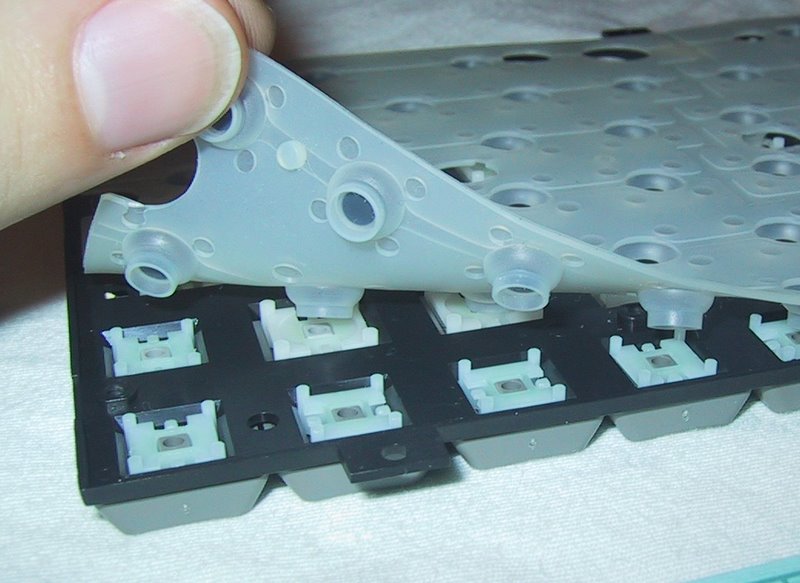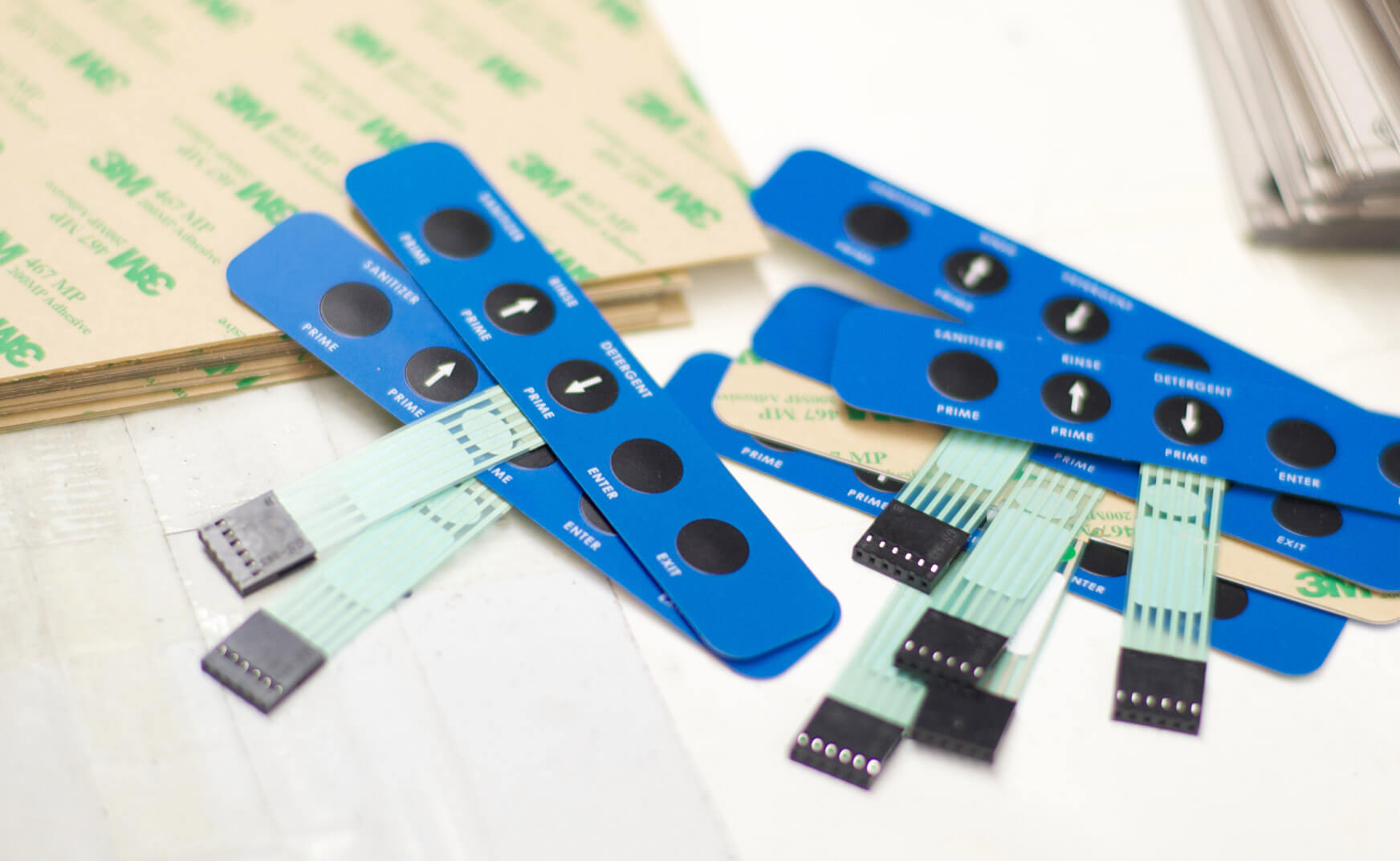Recognizing the Importance of Membrane Switches in Customer User Interfaces
Membrane switches are important parts in the layout of reliable individual interfaces, helping with not only functionality but likewise improving visual appeal and user interaction. Their distinct attributes, such as resistance to environmental factors and customizable styles, make them suitable for a diverse selection of applications throughout numerous markets. As we discover the numerous advantages and future fads connected with Membrane modern technology, it comes to be clear that these switches are greater than simply parts; they stand for a merging of advancement and usefulness. The effects of this modern technology on individual experience deserve checking out better.
What Are Membrane Switches?

The spacer layer, which consists of sticky residential properties, enables the splitting up of the circuit layer from the overlay, ensuring that the switch continues to be in a non-activated state till pressed. When stress is related to the overlay, it compresses the spacer layer, linking the space and finishing the circuit in the underlying layer. This layout not only reduces the physical room required for typical mechanical switches however likewise enhances the sturdiness of the gadget, as Membrane buttons are normally resistant to dirt, dampness, and other ecological variables.
Commonly discovered in applications ranging from customer electronic devices to medical gadgets, Membrane buttons are indispensable to modern-day technology, providing a straightforward and efficient user interface that straightens with modern design needs.
Advantages of Membrane Switches
While various button technologies exist, Membrane Switches offer unique advantages that make them specifically preferable in numerous applications. One of the main benefits of Membrane buttons is their portable layout, which enables for space-saving implementations in tools where realty is restricted. Their thin profile not only boosts visual appeal however additionally assists in lightweight building.
One more significant advantage is their resistance to ecological elements. Membrane switches are typically secured versus moisture, dirt, and contaminants, making them ideal for usage sought after settings, such as medical tools and commercial equipment. This durability expands the life expectancy of the button, lowering maintenance costs and improving dependability.
Additionally, Membrane buttons can be customized to satisfy particular style requirements, integrating distinct graphics and colors that improve customer communication. Their responsive responses choices can additionally be customized to give a satisfying individual experience. Furthermore, Membrane switches are cost-effective, specifically in high-volume applications, as they can be generated effectively.
Applications in Various Industries

In the consumer electronic devices industry, Membrane switches are common in devices such as microwaves, washing machines, and remotes. Their responsive responses and visual alternatives enhance individual experience while giving a streamlined, modern look. Furthermore, automotive suppliers make use of Membrane buttons in control panel controls and infomercial systems, where space is limited, and user engagement is crucial.
Additionally, the industrial sector leverages Membrane buttons in control panels for equipment and devices, permitting instinctive procedure in usually severe atmospheres. Their resistance to chemicals and wetness ensures long life and reliability in these applications. Overall, the adaptability of Membrane Switches contributes significantly to their extensive use, making them crucial in different technological domains.
Style Factors To Consider for Membrane Buttons

When designing Membrane switches, a number of essential considerations should be thought about to make sure optimum performance and user experience. The option of materials is crucial; selecting durable, premium substratums can enhance the button's durability and resistance to environmental aspects such as dampness and temperature changes.
Second of all, the style of the graphic overlay ought to prioritize clarity YOURURL.com and convenience of usage. Symbols and text should be understandable, and the design ought to facilitate instinctive interaction (membrane switches). Furthermore, tactile responses is necessary; integrating a tactile dome or other mechanisms can boost the individual experience by supplying physical confirmation of activation
Another important factor is the switch's electric efficiency. Developers need to make sure that the conductive traces are effectively developed to minimize resistance and stay clear of signal interference. This entails analyzing the called for actuation force and making certain compatibility with the digital components they will certainly interface with.

Future Patterns in Membrane Innovation
As modern technology continues to advancement, Membrane switches are poised to develop significantly, driven by innovations in products and manufacturing techniques. One arising trend is the incorporation of innovative materials, such as adaptable substrates and conductive inks, which improve sturdiness and reduce the general weight of Membrane switches. These products not only boost the tactile reaction yet also enable for the layout of buttons that can stand up to harsher ecological problems.
Furthermore, the assimilation of touch-sensitive technologies is changing traditional Membrane Switches into more interactive interface. Capacitive touch sensing units installed additional resources within Membrane button panels can provide a more instinctive and receptive customer experience, lining up with the expanding need for streamlined, modern styles in customer electronic devices.
Furthermore, developments in printing methods, such as electronic and 3D printing, allow quick prototyping and customization of Membrane buttons. This adaptability allows suppliers to react quicker to market demands and consumer choices.
Finally, sustainability is becoming a considerable focus, with producers discovering green products and procedures. As these patterns unfold, the future of Membrane innovation assures improved capability, aesthetic allure, and ecological responsibility, solidifying their role in advanced customer interfaces across different industries.
Conclusion
Finally, Membrane Switches stand for an important part in the layout of interface, incorporating performance with visual flexibility. Their benefits, consisting of toughness and resistance to ecological elements, make them ideal for varied applications throughout numerous industries. Thoughtful style factors to consider enhance individual communication and experience. As improvements in technology continue, the development of Membrane switches is anticipated to additional improve interface, driving technology and enhancing usability in a progressively intricate technological landscape.
Membrane buttons are integral elements in the design of reliable user interfaces, promoting not only capability but additionally enhancing visual appeal and individual communication.Membrane Switches offer as a crucial part in numerous customer interfaces, helping with a smooth communication between users and digital tools.While numerous switch innovations exist, Membrane Switches offer distinctive advantages that make them particularly desirable in various applications.Furthermore, Membrane buttons can be customized to satisfy particular design needs, integrating special graphics and colors that boost individual communication.In final thought, Membrane Switches stand for a vital component in the style of individual interfaces, integrating functionality with aesthetic flexibility.